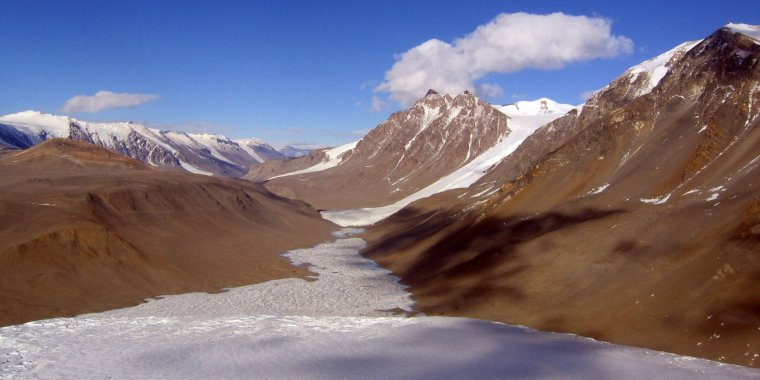| News / Science News |
Soot transported from elsewhere in world contributes little to melting of some Antarctic glaciers
Airborne soot produced by wildfires and fossil-fuel combustion and transported to the remote McMurdo Dry Valleys of Antarctica contains levels of black carbon too low to contribute significantly to the melting of local glaciers.

The McMurdo Dry Valleys with a view of Lake Hoare and the Canada Glacier. Image credit: Dave Haney/NSF
Strong winds in the Dry Valleys, however, can temporarily cause large spikes in the amount of locally produced black carbon, which is distributed through the ecosystem.
In the study, the researchers differentiated between black carbon produced elsewhere in the world and carried by winds to the Dry Valleys and black carbon produced by local combustion sources, such as helicopter flights, combustion toilets and other fossil fuel-intensive activities associated with Dry Valleys field camps.
The Dry Valleys are a unique ecosystem within the Antarctic continent. The continent as a whole is a landmass the size of the U.S. and Mexico combined, of which 98 percent is permanently covered with ice and snow.
The Dry Valleys, by contrast, are ice-free, mountainous regions, interspersed with glaciers, where little snow accumulates because they are scoured by winds.
Samples taken from a snow pit in the accumulation region of the Commonwealth Glacier suggest the black carbon transported from beyond the continent is not sufficient to reduce the albedo -- the glacier's ability to reflect light -- to a degree that would increase melting.
The research showed that while concentrations of black carbon aerosols near the surface of the valley floor are low, locally produced black carbon may stay sequestered in the upper layers of soils near field camps until it is disturbed and distributed by high winds, including the so-called Foehn wind event, a warm southerly wind that occurred during the study period.
The results of the work indicate that the near-surface concentrations of black carbon in the air in the local area can increase by a factor of three during episodic wind storms. (National Science Foundation)
YOU MAY ALSO LIKE





